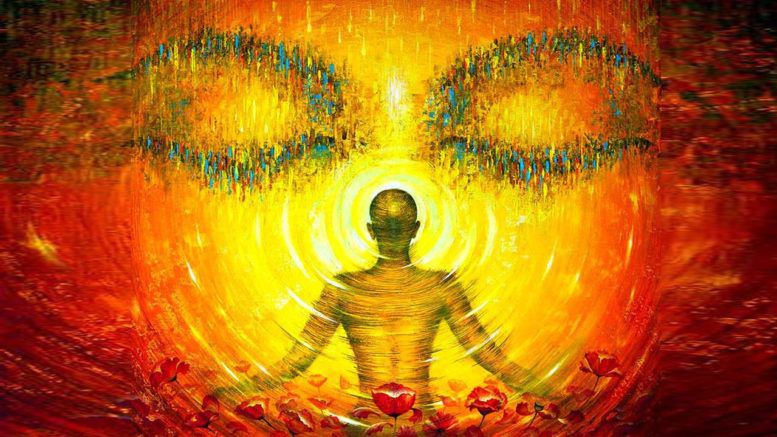No products in the cart.
The word ,or rather, concept, Sanātan Dharma.
Now, the concept, or word, Hinduism.
What are the similarities in both? Are they synonymous? No.
These two terms are not synonymous.
They indicate two different branches of spirituality.
These are but two unique yet two imperial offshoots of the Hindu Dharma.
Sanātan means constant. Thus, Sanātan Dharma refers to the continuity and integrity of this stream of spirituality and beliefs as a whole. A constant Dharma,is what it refers to.
The words Sanatan Dharma and Hinduism are used by many well intentioned writers and bloggers almost interchangeably and synonymously.
And while modern usage doesn’t always honor meanings of words, and indeed, changes meanings of words, I tend to agree with our ancient Grammarians that while the speech of clarity brings blessings and prosperity, misleading speech (such as that of our politicians & advertisers) does not.
Sanātan Dharma and Hinduism are not the same. Far from it though.
The word Hinduism is often used today, both inside and outside of India, as more of an identifier of the indigenous religion of India and even I use it for the sake of simplicity and economy of expression. But let’s consider for a moment the difference between the words, with a bit of history, and in terms of the metaphysics of the words themselves.
It’s the suffix “ism” attached to the word Hindu. As all English Language speakers instinctively know as part of their meta-language is that ism signifies a particular and somewhat singular idea or belief. Communism, vegetarianism, pacifism, consumerism, ethnocentrism. All these words lead back to believing or following a particular idea.
The word Hindu has been used meaning Indian, until the suffix ism was attached by the British in the 19th century. Almost immediately, the West shifted the meaning of Hindu away from it geographical identity and towards a particular and singular religious identity, which in the post-enlightenment West meant a belief, a doctrine. Even the Imam Bukhari of Jama Masjid in Delhi has described how he was registered at the gate of Mecca during his Haj as a Hindu Muslim, not for a second considering the word Hindu to be anything other than a geographical signifier. Also,a religious divider.
So, it is reasonable for anyone speaking English to conclude that Hinduism is only a religion of the Indians, and it would be reasonable for a non-Hindu or non-Indian to ask a Hindu, “What do you Hindus believe in?”
The Sanātan Dharma, on the other hand, is not overly concerned with ideas and belief. Traditionally Sanātan Dharma signifies the dynamic sum of the knowledge of all the diverse traditions of Bharat Mata, or Greater Hindusthan, if you will, since the beginning of time. It is not the SUBJECT of knowledge (or the means by which it may be obtained – as in an ism), but the object of knowledge. It is not something one man or woman can put their hands around, or know or master in a lifetime. There are no ideas thus known,that are known and used to address the Sanatan Dharma as a whole, but rather interpretations and commentaries of small parts of it. Even the word ” dharma” is used today very largely within the framework of the European post-enlightenment category of religion, while, actually, traditional people think of dharma much in the same way modern people think of science.
Let’s note the etymology.
The British added the ” ism “to Hindu as a means of representing the Hindu, homogenizing, standardizing, and reducing the Hindu to a defined set of beliefs (the doctrine), defined scriptures (the text), and deity (measured against a monotheistic standard). And thus, Hinduism, as defined by the British and others (certainly with a great deal of Indian indigenous read Brahmin input), could comfortably fit within the Euro post-enlightenment categories, and on the imperial grid of all things.
We know, on these pages, that the Hindu culture, or in these times, the Indian culture, is probably the most intellectually robust culture ever. What one would expect to find in such a culture is diversity, which is the name of Indian culture today as it was thousands of years ago in the time of the ऋषिs. The uniformity and obedience to doctrine that the monotheist religions demand has always been conspicuously absent from Hindusthan, as great thinking has always been marked by great debates and commentaries, and oral tradition has avoided the rigid limitations and authority of the printed text. Shastra, of course, does not refer to a limited text, nor a printed text, even if a printed text may be included in Shastra. Shastra and most, if not all, sacred texts and Hindu scripture in the traditions of the Sanatan Dharma come from Oral Tradition.
There is no uniform belief, octrine, or set of beliefs that all Hindus accept. This is completely obvious. There is no ism; it was invented for the purposes of empire. The Sanatan Dharma addresses this nature of diversity constituting the whole religion,that believes in the same and common God.
The mantra here goes such:-
“OM PURNAMADAH PURNAMIDAM
PURNAT PURNAM UDACHYATE
PURNASYA PURNAMADAYA
PURNAMEVA VASHISYATE”This roughly translates to,
“That is Whole – this is Whole
The Whole comes out of the Whole
If the Whole is subtracted from the Whole
Still the Whole remains.”
Sanātan Dharma is constant.
Hinduism is the Sanātan Dharma.
Yet ,they are not the same,neither synonymous nor similar in meaning.
Does this make sense? There is no full stop. There are only commas in Hinduism.






